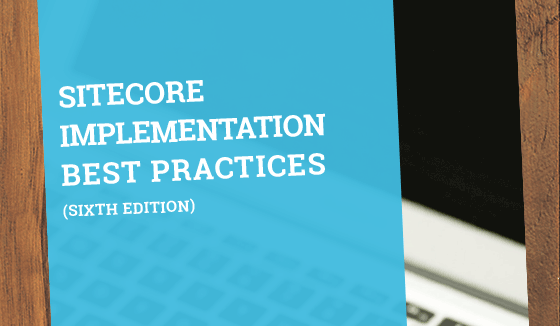

Sep 02, 2020
Delivering personalized, omnichannel experiences is one of the biggest challenges marketers of today face. To effectively set up a personalization engine, marketers need to include personalization rules, data analysis, content curation, and manual configuration. While it’s still possible for marketers to do this at a small scale, when it comes to scaling, even the savviest marketers and business users will falter.
This is where machine learning and artificial intelligence come into play to help them deliver personalized experiences at scale. According to Forrester, machine learning is a fundamental building block of artificial intelligence. With machine learning, computers can make predictions and decisions, recognize patterns, and learn from data.
As a machine learning-powered tool, Sitecore Cortex™ can help non-technical users scale their content production and understand data better as well as detect potential new customer segments and increase sales potential.
In this article, we will break down the pieces that go into making Sitecore Cortex and how its machine learning algorithms enable marketers and data scientists to work together to achieve greater business results.
What Is Sitecore Cortex?
Sitecore Cortex is the machine learning engine within Sitecore. Cortex is built on top of Sitecore DXP and lets users analyze any data within the DXP, including your own data and data from third-party systems.
Using machine learning algorithms, Cortex will analyze all this data and provide timely insights at a moment’s notice. Cortex goes beyond analytics and monitors massive amounts of user data to offer recommendations on content delivery and data clustering.
Sitecore’s machine learning capabilities are integrated within the DXP, which means that there isn’t a separate dashboard for Cortex and that the platform in itself is infused with machine learning algorithms.
Thanks to Cortex’s integrated machine learning algorithms, delivering timely content becomes more accessible as the tool reduces the guesswork involved in business processes. With Cortex, brands can analyze what has been successful in the past and replicate it at every step of the customer journey.
The Elements of Sitecore Cortex
Sitecore Cortex has been a part of Sitecore since the 9.1 version. Cortex provides segmentation and automation tools for marketing teams, delivering relevant content to users. Cortex is composed of three parts. Let’s take a look at them.
Data
xConnect collects data automatically every time a user interacts with your website or digital experience. It includes custom types, contacts, and interaction points.
Framing
Framing simplifies business goals and transforms them into predictable features. By defining goals, marketers can train Cortex to identify opportunities.
Model
The model defines the relationship between features and labels, using a statistical programming language that gives marketers a deep understanding of the predictive model Cortex is building.
Sitecore Cortex for Non-Technical Users
Cortex integrates with Sitecore DXP’s content delivery layer as well as with the analytics layer, sitting as an extra intelligent layer that analyzes all the input from these two parts and helps create individualized, one-to-one omnichannel marketing experiences.
Cortex works by gathering data from the visitors and learns as they navigate the site. This enables marketers to optimize their content and their offerings to match the visitor’s preferences on the spot. Doing this manually and efficiently is costly and unfeasible because of the human bias. However, with a machine learning-powered tool like Cortex, the personalization is more precise, which increases the possibility of engaging and converting users.
There’s a lot of buzz around machine learning and AI in general, and that’s not without reason. Tools like Cortex leverage machine learning to give marketers contextual intelligence that can be applied to real-world scenarios.
These are some of the features of Sitecore Cortex that are especially for marketers and business users:
Improved Data Processing
Cortex also integrates with other pieces of Sitecore DXP to extend the capabilities of the other tools. For instance, with the help of Cortex, the Sitecore Experience Database has the tools to collect big data and process it as it enters the platform. While xDB and xConnect have been part of Sitecore for a while now, the advent of Cortex has brought a new layer of accuracy to the insights Sitecore DXP collects, helping marketers make the right move at the right time.
Powerful Analytics
Using machine learning algorithms, Cortex processes all the data you have collected and helps the platform organize those data points into a format marketers can understand and extract insights from.
Streamlined Content Tagging
Cortex’s content tagging offers a simple way to tag everything in your content. From products to people to places and events, content tagging makes sure that you increase the visibility and accessibility of your content. Cortex uses natural language processing engines like Refinitiv and Tagging Open Calais, which enable Sitecore to send content to an NLP platform and get metadata to tag content.
Suggested Personalization Rules
When a test is run, Cortex enables marketers to collect data and find out which experience gives them the best results based on their objectives. Then, Sitecore selects the best experience and uses it. But if certain users can benefit from different personalization, Sitecore suggests new personalization rules for that particular segment.
First Steps to Leveraging Sitecore Cortex
Sitecore Cortex holds many benefits for marketers, enabling them to automate a lot of the processes that are manually done in the marketing workflow. It also helps to spot trends that even the savviest marketer might miss. However, without knowing where to start, it might be challenging to see the benefits of Cortex right away. These are some essential first steps you need to follow to see your efforts take shape.
-
Set Up A Goal And Collect Data
Like with most things in the world, you need to start with a goal. Create an accurate picture of your own use case and picture all the points of the customer journey, from consideration to decision. Once you have a clear picture of the journey, it’s necessary to define the dataset so the technical team can train the machine. With Sitecore, marketers can still use different data collection tools to collect behavioral data. -
Start Your Model Training
Once you have the data required, you can let Cortex export the data to the machine learning server and retrieve the predictions. During this step, your technical team should develop the training algorithm and define the structure of the data model. -
Personalize Content
Now that you have both the data and the machine learning model, it’s time to use the predictions to personalize the content in your website or app based on the projections Cortex has helped you make.
Implement Sitecore Cortex with Oshyn
Sitecore Cortex is a powerful tool that would enhance any marketer’s toolbox. The best thing about it is that you don’t need any extra integrations to implement it. Cortex’s machine learning capabilities can boost your data collection and drive tangible benefits.
If you’re already using Sitecore but don’t know how to make the most of Cortex, remember that things get much easier with an implementation partner.
Oshyn is a Sitecore implementation partner that works with some of the world’s top brands to build amazing digital experiences. We have the experience and technology necessary to get the most out of Sitecore Cortex and also leverage features such as Sitecore AI to create exceptional user experiences.
Learn more about Oshyn's Sitecore services that help you get the most out of Sitecore.








